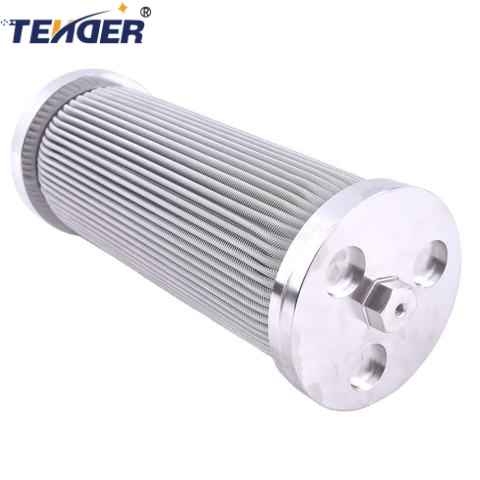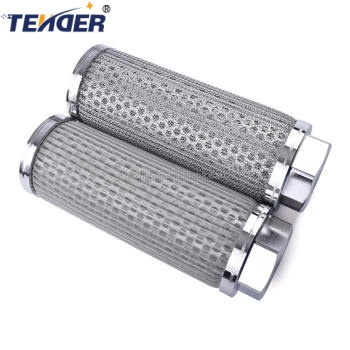Pleated Wire Mesh Filter Element: field notes from the shop floor and the spec sheet
If you’ve spent any time sourcing process filtration, you already know the quiet hero is the stainless steel mesh filter. Specifically, the pleated kind. It’s the unflashy workhorse that keeps lines clean in petroleum, chemical, pharma, food, aviation, and machinery. This particular model—Pleated Wire Mesh Filter Element—comes out of Anping, Hengshui City, Hebei, China, which, to be honest, is pretty much the Silicon Valley of woven mesh.

What’s trending (and what actually matters)
- Pleat density is up: more media area without bloating the housing.
- 316L and duplex grades for aggressive fluids; many customers say 316L hits the sweet spot of cost vs. corrosion resistance.
- CIP/SIP-ready constructions with welded end-caps (no adhesives) for food and pharma.
- More audits asking for traceability (EN 10204 3.1 MTCs) and ISO 9001-backed QA—no surprise there.
Core specs at a glance
This pleated element increases effective filtration area, boosting dirt-holding and lowering initial ΔP. Real-world use may vary, obviously, based on fluid, viscosity, and duty cycle.
| Parameter | Typical value | Notes |
| Material | SS304 / SS316L | Woven per ASTM E2016; 316L for chlorides |
| Micron rating | 5–200 μm | Cut-point verified via ASTM F316 bubble point ≈ |
| Outer diameter / length | Ø25–120 mm / 50–1000 mm | Custom cores and end-caps available |
| Max temperature | ≈ 400°C (dry); 250°C (CIP/SIP) | Depends on seals/end-cap materials |
| Differential pressure | Up to 1.0 MPa | Initial ΔP typically 10–35 kPa at rated flow ≈ |
| Efficiency (Beta) | β10 ≥ 200 | Multi-pass per ISO 16889 |

How it’s made (short version)
- Material selection: SS304/316L wire cloth woven to spec (ASTM E2016).
- Pleating: controlled pleat height and spacing to maximize area.
- Core & cage: perforated SS tube for collapse resistance; TIG or spot welding.
- End-caps: SS or plated steel; adhesive-free options for high-temp and food contact.
- Testing: bubble point (ASTM F316), multi-pass (ISO 16889), burst/Collapse tests, and DP-flow curves. Certificates on request.
Service life? In steady hydraulic oil, I’ve seen 3–6 months; in sticky food syrups, closer to 4–8 weeks before cleaning. With backflushing, cycles can extend 2–4×, provided solids are not fibrous.

Where it’s used (and why)
Petroleum up/downstream, chemical solvents, pharma APIs, dairy and brewing, aviation hydraulic skids, general machinery—any process that wants robust, cleanable media. The big advantages of a stainless steel mesh filter are thermal stability, solvent resistance, and predictable cut-point. Many clients tell me it’s the “set it, forget it” stage before polishing filters.
Real-world snippets
- Chemical plant: swapping 10 μm baskets for 5 μm pleated 316L cut ΔP by ~18% at 12 m³/h, extending changeout from 9 to 22 days.
- Aviation maintenance: achieved ISO 4406 16/14/11 on hydraulic test stand; β10 ≥ 200 verified on-site with multi-pass cart.

Vendor snapshot (because supply matters)
| Vendor | MOQ | Lead time | Customization | Certs | Price ≈ |
| Anping manufacturer (origin) | 10–50 pcs | 7–15 days | High (OD/ID, pleats, caps) | ISO 9001, EN 10204 3.1 | $$ |
| OEM importer | 50–100 pcs | 3–6 weeks | Medium | ISO 9001 | $$$ |
| Online marketplace | 1 pc | Stock/unknown | Low | Varies | $–$$ |
Customization and compliance
Options include mesh count/micron rating, pleat geometry, welded or crimped end-caps, Viton/PTFE seals, and sanitary ferrules. For food and beverage, ask for 3-A and FDA food-contact declarations; for potable water, NSF/ANSI 61 is often requested. Documentation-wise, ISO 9001 QMS and material certs (EN 10204 3.1) are standard fare.

Final tip: when specifying a stainless steel mesh filter, share your fluid, viscosity, target ISO 4406 (if hydraulic), flow, temperature, and allowable ΔP. It sounds basic, but it saves weeks of back-and-forth.
Authoritative citations
Anping Tengde Metal Wire Mesh Products Co., Ltd. Has been dedicated to the production and research and development of wire mesh products for 30 years. Leading Vibrating Screen It is a comprehensive department integrating production and processing, distribution and wholesale. Stainless steel mesh series, wire mesh products series, and filter elements and filter materials. Wire MeshWe can also produce various special-shaped net types and deep-processed net products according to customer needs and requirements. wire mesh suppliers All our products leaving the factory have undergone strict inspection to ensure that they are 100% qualified. Filtration Screens ManufacturerThe company adheres to the business philosophy of “technology leadership and quality victory”, and has nearly a hundred MID-to-senior level professional and technical personnel. wire mesh manufacturer We have maintained long-term and good cooperative relations with large domestic oil fields, coal mines, petroleum, machinery, chemical and other units, and have established good trade relations with more than 70 countries including the United States, Japan, Russia and Australia. Anping Tengde Metal Wire Mesh Products Co., Ltd.wire mesh screens suppliers Will continue to adhere to the tenet of “customer first, integrity-based”, and with the spirit of continuous innovation and win-win cooperation, forge ahead and challenge the future.wire mesh filter manufacturers|mesh wire suppliers